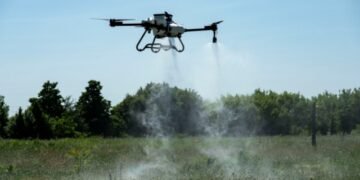When most people think about IT security, their mind immediately jumps to anti-virus software, firewalls, and other types of digital or virtual security. However, these are all simply layers of a good IT security strategy; another important layer that often gets overlooked is physical security. It is easy to get too focused on the digital side of cyber security, and forget that, in the right circumstances, a hacker wouldn’t need to use any form of sophisticated cyber attack to get their hands on your data.
What is Physical Security?
Physical security is exactly as it sounds, it is the practice of deterring and detecting physical threats in much the same way as you would detect physical threats in any other business. A locked door with only one supervised key is an example of physical security employed as part of a wider IT security strategy. A business must always take into account that there are real-world ways of stealing data which, if overlooked in favor of purely digital solutions, will leave huge holes in their defense.
Common Physical Security Risks (150)
There are a fairly wide array of physical security risks that can compromise ones IT infrastructure. The cause for these risks vary depending on the type of business.
Small business physical security risks most commonly arise from the fact that their budget is limited. It is natural for SMBs to prioritize their budgets in favor of mission-critical areas of their business. If your business involves providing IT support services in London or the UK, it will be much easier to invest in a layered IT security strategy; however, if your business is not in a highly tech-centric industry, it is less likely you’ll be prioritizing IT and IT security in your budget. For example, a small business is much less likely to be able to invest in dedicated security personnel on their site. Additionally, their server room or server cupboard may not have professional security installed – a locked door may be the only thing protecting it.
The risks are not only limited to small businesses with small budgets. Larger businesses might even have more risks. For example, a large business will usually have larger sites, which means more physical points of entry – it becomes harder to cover all entry points with security. Size also means more logistics and more complex bureaucracy – reliance on access passes and security badges, and many other things that can be faked or stolen.
What is more, a large business with lots of staff will be much easier to hide in than a small business where you would expect all the staff to know and recognize each other. Thieves have been known to simply dress as any other office worker and rely on the anonymity of large businesses to move around the building unchallenged.
Physical Security Solutions
Physical barriers are one way of improving physical security. Even a fence with limited points of egress will reduce the likelihood of thieves attempting to enter the site. The same goes for doors and gates that remain locked with keys, security codes, or key fobs; of course, all of those things can also be copied by a thief and so this shouldn’t be your only line of physical security.
Identity-based access is another good security measure – in other words, only permitting people access to a site once their identity has been confirmed. This may seem tedious for people that work at the site daily, but having that policy in place makes it much harder for thieves to pretend they are meant to be on the site.










